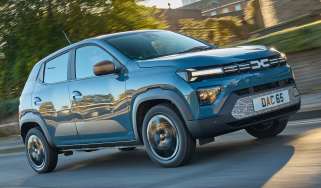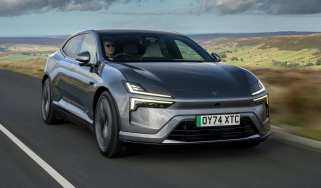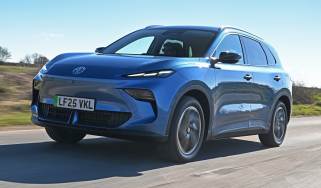What is regenerative braking?
Check out our guide to regen braking or 'B mode'. We explain what it is, how it works and why you musn’t be afraid of it
Although it sounds confusing, brake regeneration is very simple. Also known as brake recuperation or 'B mode', this system is fitted to almost every electric and hybrid car on the market. It's designed to harvest the excess energy produced when you brake or coast, and feed it back into the car's battery. By doing so, on some vehicles it can slow your car down to such an extent that you don’t even need the brake pedal - this is often referred to as ‘one-pedal driving’.
How does regenerative braking work?
It’s pretty simple. When the electric motor is driving the car forwards, it’s putting energy into turning the car’s wheels. But when you lift off the accelerator or brake in a car with regenerative braking, the process is reversed and the car’s wheels actually turn the electric motor. Effectively, the electric motor becomes a generator that's powered by the car’s own momentum.
However, for the electric motor to harvest that energy, it must apply force, which it does by running in reverse. This is why, when you lift off the throttle in a car with regenerative braking, you feel it brake without you hitting the brake pedal.
What are regen braking modes, or B modes?
This is also why the technology often has more than one brake regen mode – or B mode – since it’s very easy for manufacturers to program the electric motor to offer different ‘levels’ of pressure. This means you can choose very heavy braking to maximise energy gain, or even turn it off altogether if you don’t like the sensation of the car braking itself when you stop accelerating.
On top of this, many electric cars now use radar technology to add an ‘automatic’ mode to the brake regen systems. This works almost like an adaptive cruise control function which means the car will vary the recuperation force itself in order to keep a safe distance from the vehicle in front.
'One-pedal' systems, such as the e-Pedal driving mode on the Nissan Leaf, are further developments of brake energy recuperation. They simply dial up the brake force to the point where you needn’t use the ‘normal’ brake pedal at all when driving at slower speeds. The car will slow itself quickly when you lift off the throttle and ultimately bring itself so a complete stop.
Do electric cars have normal brakes too?
All electric cars will always have standard mechanical friction brakes fitted, but if you want to maximise your car’s range and also save yourself wearing out on the brake pads, then it pays to use the regen system as much as possible. There are many electric cars that don’t actually use the traditional brakes unless you are quite firm with the brake pedal, the car will instead use the recuperation system for lighter braking to maximise the range.
Quite a few EV drivers actually prefer this and find that it feels very natural, just like engine braking in a petrol or diesel car feels completely normal. The only difficulty is it can be disconcerting and can have a noticeable change in response when it makes the switch from regeneration to normal braking. It will be something a new electric car driver will have to get used to when you drive one for the first time.
Most Popular

EV Deal of the Day: Dacia Spring is amazingly good value at £116 per month


